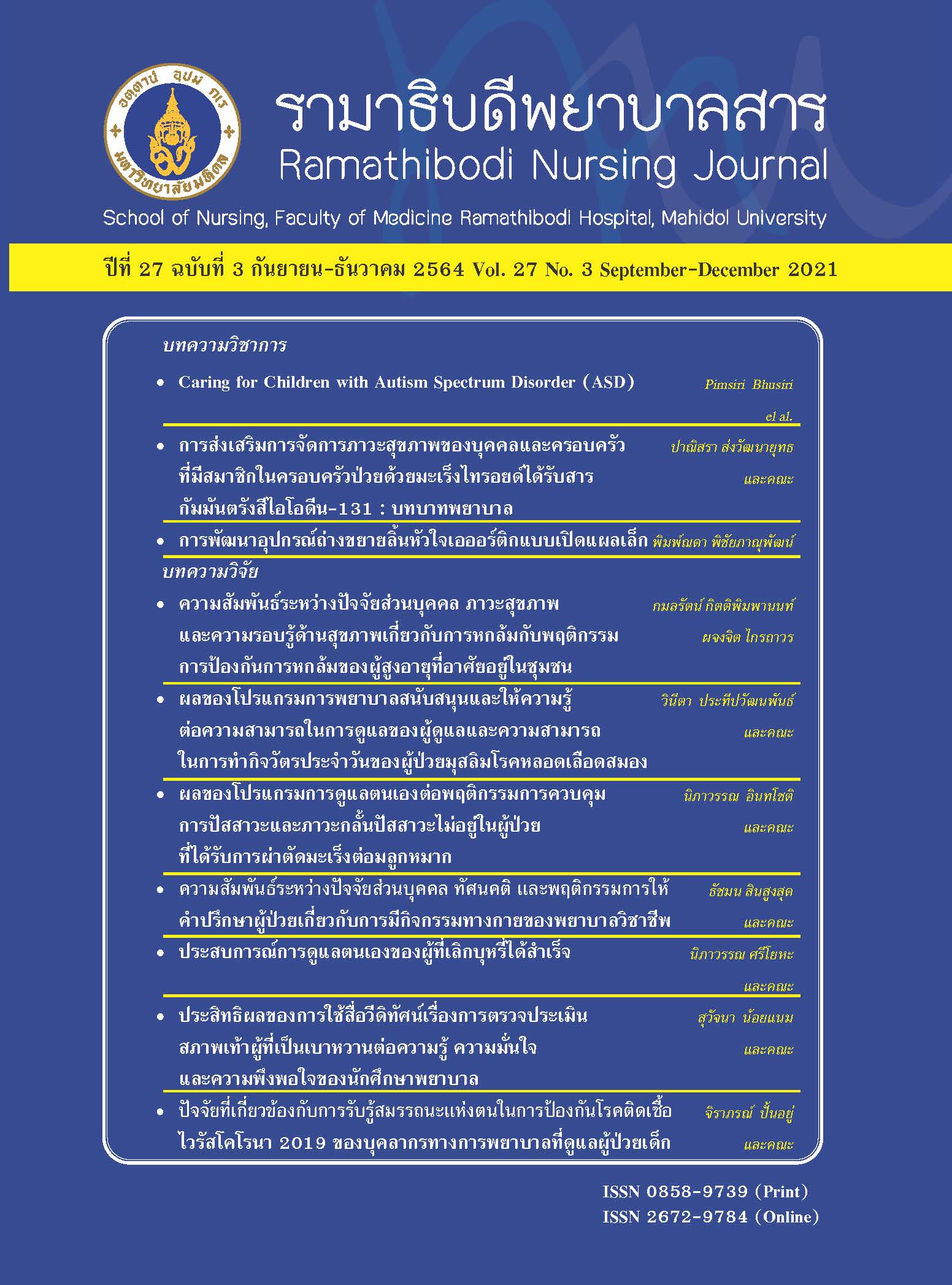Development of an Aortic Valve Retractor for Minimally Invasive Aortic Valve Replacement
Main Article Content
Abstract
Mini aortic valve replacement retractor is a device designed to dilate the aortic valve in a minimally invasive aortic valve replacement (Mini AVR) procedure. Where the incision is small, and the pathological condition is deep, the operation field is limited.This retractor would facilitate the surgeon to see the surgical site in the narrow space of the deep cavity. The Mini AVR retractor is made from stainless steel, similar to surgical
tools. The inventing process of this device is simple and inexpensive. A set of Mini AVR retractors consists of flexible, six-sized blades with a small and long handle. The Mini AVR retractor has advantageous characteristics in its flexible blades, which can be chosen to suite the aortic valve. In addition, a small and long handle can reach the aortic valve position, and it is easy for the surgeon’s assistant to hold. At the same time, it does not interfere with the surgeon’s eyesight during the operation. These characteristics will
facilitate the surgeon to conduct the surgery quickly and safely. Also, this product is low-cost. Results from the evaluation by surgeons and scrub nurses using the Mini AVR retractor revealed that the mean score of overall satisfaction with this device was at the highest level. Thus, the Mini AVR retractor should be applied to improve the procedure quality for minimally invasive aortic valve replacement.
Keywords: Mini AVR retractor, Minimally invasive aortic valve replacement,
Satisfaction
Article Details
บทความ ข้อมูล เนื้อหา รูปภาพ ฯลฯ ที่ได้รับการตีพิมพ์ในรามาธิบดีพยาบาลสาร ถือเป็นลิขสิทธิ์ของวารสาร หากบุคคลหรือหน่วยงานใดต้องการนำทั้งหมดหรือส่วนหนึ่งส่วนใดไปเผยแพร่หรือเพื่อกระทำการใด ใด จะต้องได้รับอนุญาตเป็นลายลักษณ์อักษรจากรามาธิบดีพยาบาลสารก่อนเท่านั้น
References
Junwittayanujit T. Principle of minimally invasive surgery.In: Piempongkosol S, editor. Textbook of practical surgery.6. Bangkok: Krungtepwetjasarn; 2010. p. 82-6. (in Thai)
Klieytim S, Pichaiphanupatt P. Ramathibodi soft tissue protector for a minimally invasive mitral valve procedure and video assisted thoracic surgery. Ramathibodi Nursing Journal. 2012;18(1):1-8. (in Thai)
Schmitto JD, Mokashi SA, Cohn LH. Minimally-invasive valve surgery. J Am Coll Cardiol. 2010;56(6):455-62.
Duangnatet D, Thongcharoen P. Transcatheter aortic valve implantation (TAVI): role of
perioperative nurse. The Thai Peroperative Nurses Association Journal. 2012;2(5):1-11. (in Thai)
Lamelas J. Minimally invasive aortic valve replacement:the “Miami Method”. Ann Cardiothorac Surg.
;4(1):71.
Wang TKM, Sathananthan J, Chieng N, Gamble GD,Haydock DA, Ruygrok PN. Aortic valve replacement in
over 70-and over 80-year olds: 5-year cohort study.Asian Cardiovasc Thorac Ann. 2014;22(5):526-33.
Transcatheter aortic valve implantation [Internet]. 2010[cited 2011 Jan 5]. Available from: http://c2i2.
digithalamus.com/web1006/transcatheter_aortic_vale_implanttion.pdf
Izzat MB. Spring retractor: a new adjunct for aortic valve surgery. Ann Cardiothorac Surg . 2011;92(1):364-5.
Pongsukwetchakul T, Chiannilkulchai N. Development the clip lock for strap sterile operating microscope drape and evaluation of its effeactiveness. Ramathibodi Nursing Journal. 2018;24(2):163-77. (in Thai)
Bhumisirikul P, Chiannilkulchai N. Development of a RAMA gallbladder retrieval bag for improved patient
safety: a nursing innovation. Pacific Rim Int J Nurs Res.2018;22(3):264-77.
Tracey MW. Design and development research: a model validation case. Educ Technol Res Dev. 2009;57(4):553-71.
Martin JL, Norris BJ, Murphy E, Crowe JA. Medical device development: the challenge for ergonomics. Appl
Ergon. 2008;39(3):271-83.
Lang AR, Martin JL, Sharples S, Crowe JA. The effect of design on the usability and real world effectiveness of
medical devices: a case study with adolescent users. ApplErgon. 2013;44(5):799-810.
Blandford A, Furniss D, Vincent C. Patient safety and interactive medical devices: realigning work as imagined
and work as done. Clin Risk. 2014;20(5):107-10.


